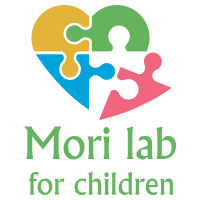


ADAS
Postnatal rearrangement of transcriptome

Phase separation
Reaction field that enables efficient energy utilization
Welcome to Mori lab page !
Thank you very much for visiting the homepage of Mori lab, Department of Pediatric Physiology at NCCHD !
I am Masaki Mori, a pediatrician-scientist, the principal investigator working at National Center for Child Health and Development (NCCHD).
principal investigator working at National Center for Child Health and Development (NCCHD).
The primary aim of the lab is to find a solution for pediatric intractable diseases.
For that purpose, we are currently engaged in molecular biological approach, bioinformatics and disease modeling.
We are welcoming graduate students who are interested in our research.
Our research focuses on juvenility, which refers to the physiological features and properties inherent to children and young animals that distinguish them from adults. This area of study, termed "juvenility science," aims to understand the unique characteristics of juvenile organisms and their potential applications in medicine and biology. Key aspects of juvenility include:
- Growth capabilities: Juvenile organisms have a higher capacity for growth compared to adults.
- Wound healing: Children and young animals typically demonstrate faster and more efficient wound healing processes.
- Plasticity: Juveniles exhibit greater adaptability and flexibility in their physiological and neurological systems.
- Regeneration: Young organisms often possess enhanced regenerative abilities compared to their adult counterparts.
- Senescence resistance: Our research investigates the underlying molecular processes that contribute to these juvenile properties, with a particular focus on long noncoding RNAs (lncRNAs).
One of our discoveries is the identification of juvenility-associated lncRNAs (JAlncs), specifically Gm14230. This lncRNA is selectively expressed in juvenile cells and plays a crucial role in maintaining cellular juvenescence. Gm14230 has been found to be essential for cell growth and preventing cellular senescence. The ultimate goal of our juvenility science research is to develop therapeutic solutions for childhood diseases and potentially apply these insights to adult medicine. By understanding the molecular basis of juvenility, researchers hope to harness these properties for improved healing, regeneration, and treatment of various conditions across different age groups.
Our ongoing research themes
We are welcoming new members !
Positions for Research Fellow are available. Candidates are both grad students and PhD researchers (post-doc).
Our lab seeks for Ph.D. students and Ph.D. researchers.
Contact Mori for detail: mori-ma[at]ncchd.go.jp
Visit NCCHD homepageLife science for children
We aim to identify how juvenile-specific physiological properties are achieved in juvenile.
Cellular juvenescence is achieved by JAGs, JALNCs and ADAS. Among the JAGs, we recently discovered that Bex1 is essential for cilia formation. Bex1-deficiency provokes ciliopathy phenotypes.
more info